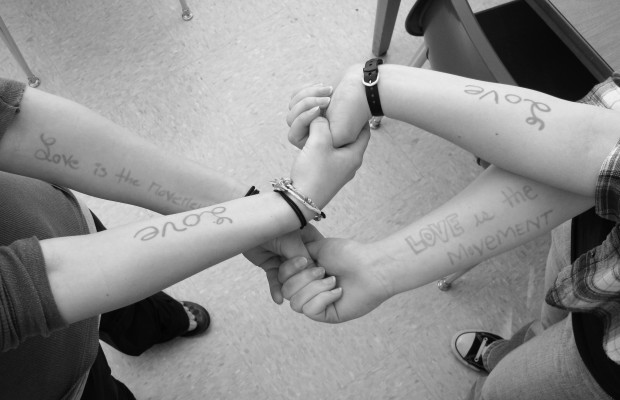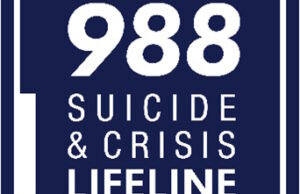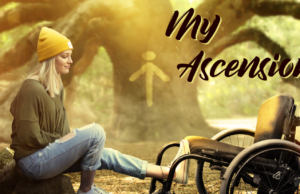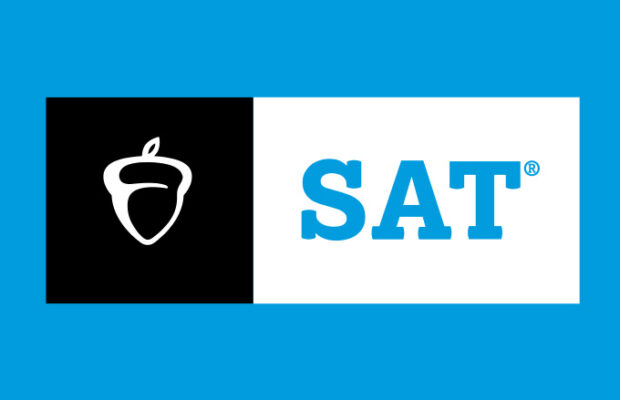To Write Love On Her Arms

National non-profit movement gains large following in supporting teen girls facing abuse, depression
Rescue is possible. For millions of teenagers around world battling abuse, self-harm and inner demons, this has become a message of hope. To Write Love On Her Arms, a nonprofit movement created over two and half years ago, has reached out to millions who suffer from depression or abuse and has given them the security to know that they are not alone.
“We say it matters, their story and yours, and we join you to remember. Please know that you are not alone,” founder Jamie Tworkowski said on his website blog.
And it was as simple as that when Tworkowski started the movement. Tworkowski worked at a board shop in Cocoa Beach, Fla., and one day he got a call that would change his life.
A friend of his was in need of help with a drug-addicted teenager named Renee Yohe. He joined his buddy out of sheer compassion and a whim in a effort to help another. Renee was a 19 year-old girl who for years struggled with drug and alcohol abuse along with self-harm. After Tworkowski met Yohe, he posted a story on his Myspace page about how Yohe struggled with self-infliction, the way she carved harmful things into her forearms with a blade. He wanted to change that. He wanted “to write love on her arms.”
Tworkowski meant what he had said, and for a week he did that with Yohe.
“Take a broken girl, treat her like a famous princess. Give her the best seats in the house. Buy her coffee and cigarettes for the coming down, books and bathroom things for the days ahead. Tell her something true when all she’s known are lies. Tell her God loves her. Tell her about forgiveness, the possibility of freedom, tell her she was made to dance in white dresses. All these things are true,” Tworkowski said in his blog on Myspace.
And so for Tworkowski, the movement had begun.
After creating T-shirts with the TWLOHA design on them and wearing them, an old friend of Tworkowski, Jon Foremen, formerly known as the frontman for the band Switchfoot, asked if he could possibly get one. Tworkowski agreed and the rest became history. Foremen mentioned his shirt on stage that night at a concert, and by the time Tworkowski had checked his Myspace the next day he had hundreds of hits and messages asking to order a shirt.
“In the days that followed, we learned quickly that the story we were telling represented people everywhere. We began to hear from people in need of help, and others asking what they could do to help their friends. We heard from people who had lost loved ones to suicide. Many said that these were questions they had never asked and parts of their story that they had never shared. Others were honest in a different way, confessing these were issues they knew little or nothing about. It seemed we had stumbled upon a bigger story, and a
conversation that needed to be had,” Tworkowski said.
“I didn’t mean to start a charity or a movement, but all of us can relate to pain. On a very simple level we are saying, ‘This is part of being human,'” Tworkowski told Rolling Stone magazine.
TWLOHA so far this year has raked in $2.9 million from sales. The money from the shirts is being used to pay for not only Renee’s treatments but for others also in hope of reaching out to the thousands who suffer from depression, abuse, self-injury and suicidal urges.
“I’m the top of a T-shirt brand that hopes to be a lot more. I don’t have a problem with money, but that’s why we exist. We exist to move people. How do you create hope? How you encourage an honest conversation? If you move someone, they’ll come back,” Tworkowski said.
TWLOHA has moved many, and he said it could move Cedar Falls High School.
He said students who battle with the same depression, self-infliction, addictions and abuse every day go unknown everywhere. Some will see this and some will not, but that’s not what matters. What matters is how we help those who are willing to ask for it.
“We all wake to the human condition. We wake to mystery and beauty but also to tragedy and loss. Millions of people live with problems of pain. Millions of homes are filled with questions – moments and seasons and cycles that come as thieves and aim to stay. We know that pain is very real. It is our privilege to suggest that hope is real, and that help is real,” Tworkowski said on his blog.
“I think he gives young folks support and hope when they are not feeling very hopeful. It is a very positive concept, and he needs to get more folks on board that can help him spread his message. It seems a little too simple to be so successful! I really like the concept but was wary of the help he was giving. The folks in his house have ‘basic counseling skills.’ This makes me nervous. This is a pretty serious topic and helpers need to be fully trained in how to help. I think he needs to spread his message to counselors and people who can help,” CFHS guidance counselor Susan Langan said.
It’s important to know that this movement, created only two and half years ago has battled many critics that have said, “Tworkowski’s rise has roiled certain old school shrinks, who bristle at his sudden success and lack of experience. Sweet little Jamie is in way over his head,” a government expert complains. There are those experts though who believe that
what Tworkowski is attempting is wonderful.
“I’ve worked in suicide prevention for 25 years,” said Madelyn Gould, a professor of clinical epidemiology at Columbia University. “And the stuff Jamie is doing, it’s like this whole underground conversation that traditional experts don’t know is happening. It’s just wonderful.”
And because of this encouragement, hope is still alive to help spread the message that suicidal urges, addictions, abuse and depression are treatable. That in the darkest mist, there can be hope.
“Over the last two and a half years, we’ve responded to 80,000 messages from people in 40 different countries. We’ve had the opportunity to bring this conversation and a message of hope and help to concerts, universities, festivals and churches. We’ve learned that these are not American issues, not white issues or ’emo’ issues. These are issues of humanity, problems of pain that affect millions of people around the world,” Tworkowski said in his vision statement.
Recent statistics have reported that two out of three people will never seek help. In America, it’s estimated that 19 million people live with depression, and suicide is the the third leading cause of death among 18 to 24 years old.
“The good news is that depression is very treatable, that a very real hope exists in the face of these issues. We’ve met people who are getting the help they need, sitting across from a counselor for the first time, stepping into treatment or reaching out to a suicide hotline in a desperate moment,” Tworkowski said.









You must be logged in to post a comment Login